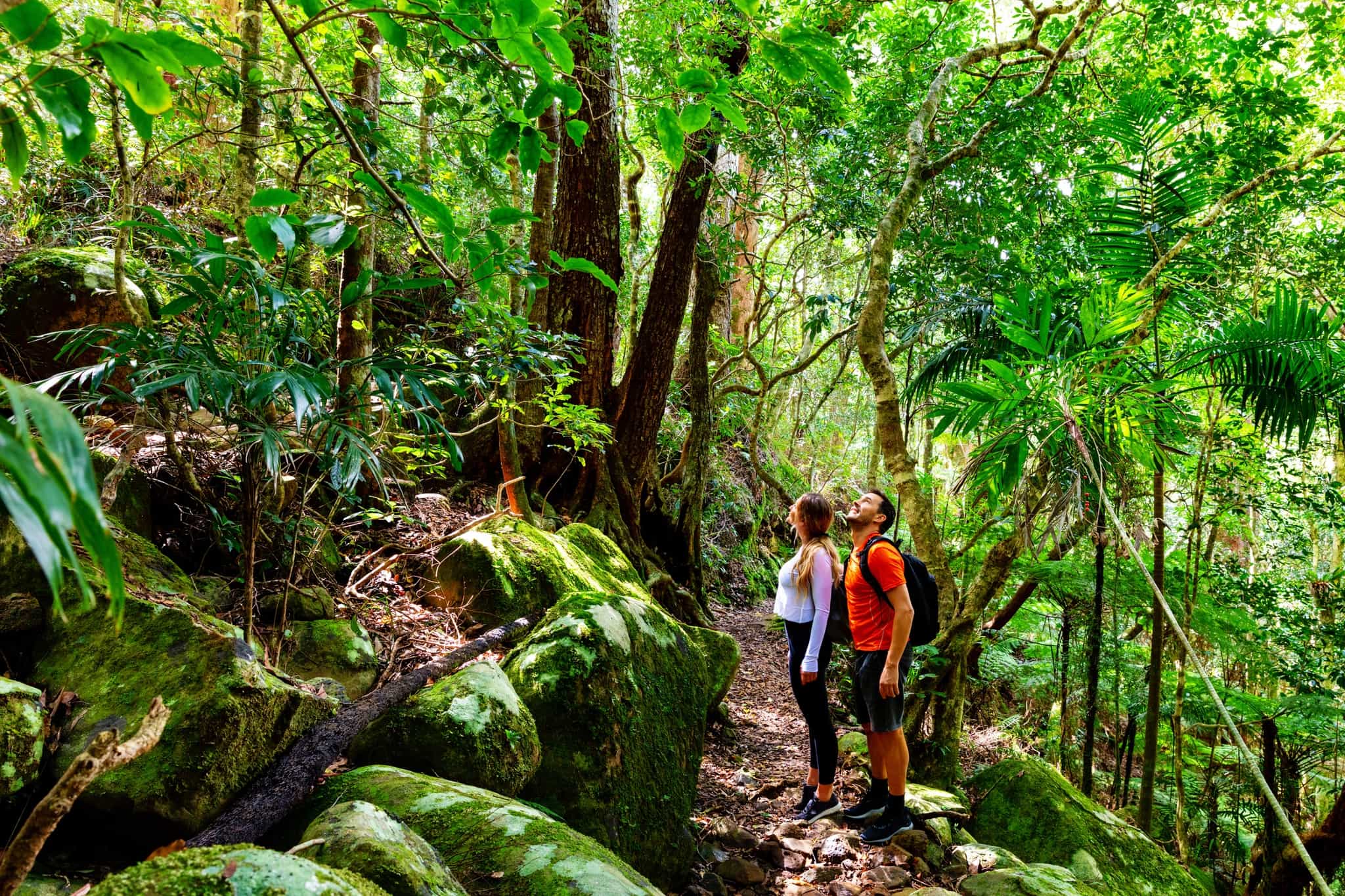
Hike, E-Bike and Paddle 250km Across Costa Rica
Make your way from the Pacific to the Caribbean on this epic coast to coast expedition, with e-bikes for a boost on the climbs
What's Included?
Activities & Certified Guides
All itinerary activities with expert, local, English-speaking guidesAll accommodation
4 nights in hotels, 7 nights campingMeals
All breakfasts, 8 lunches and 7 dinnersTransfers
To and from the airport and everything in betweenEquipment & Permits
All your biking, rafting, kayaking gear; camping equipment; all permits and entry feesSmall Like-minded Groups
Solo-friendly by design, join our small n’ sociable groups of up to 16 like-minded, active and outdoorsy people…
…
What's it like?

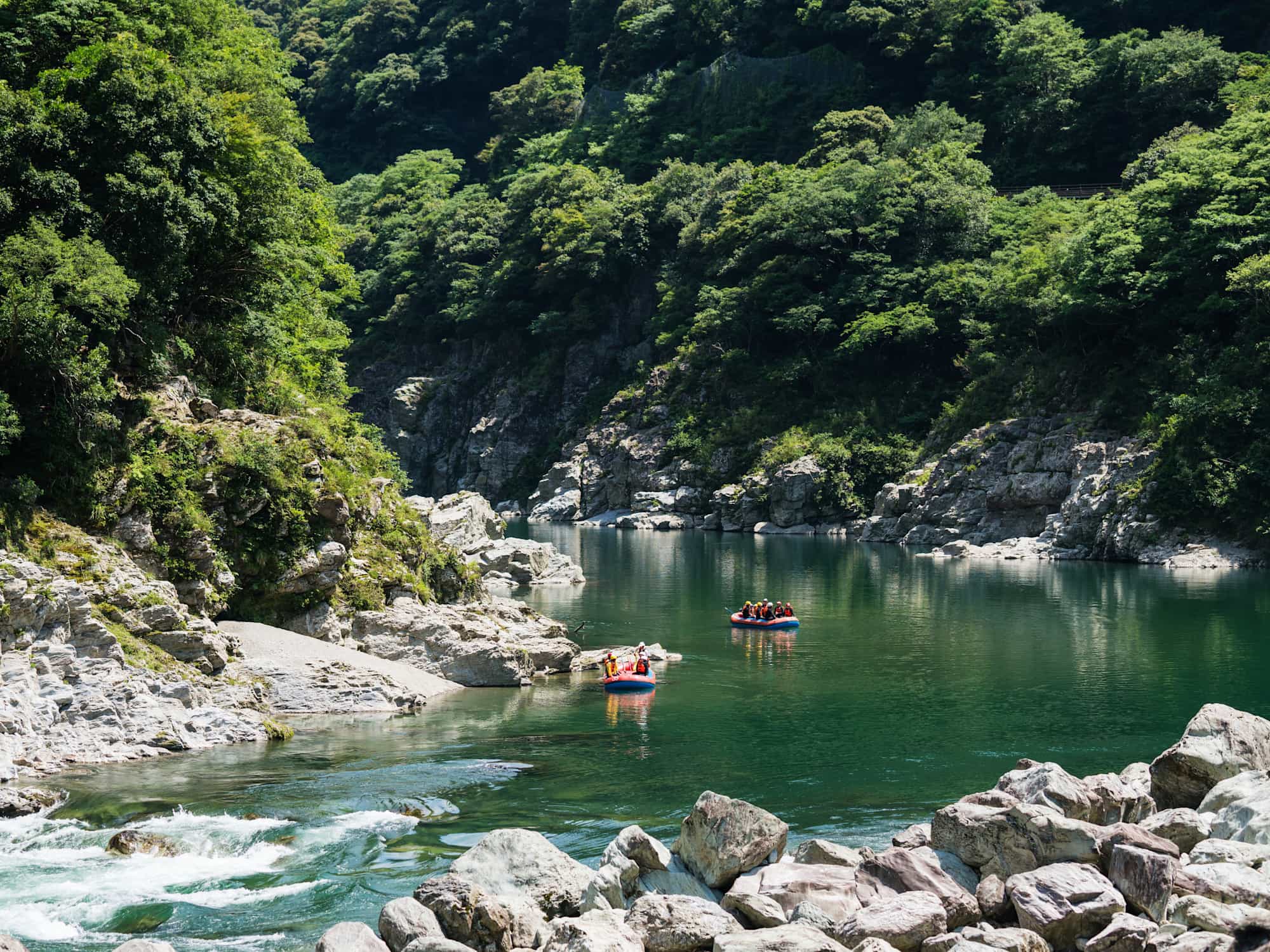
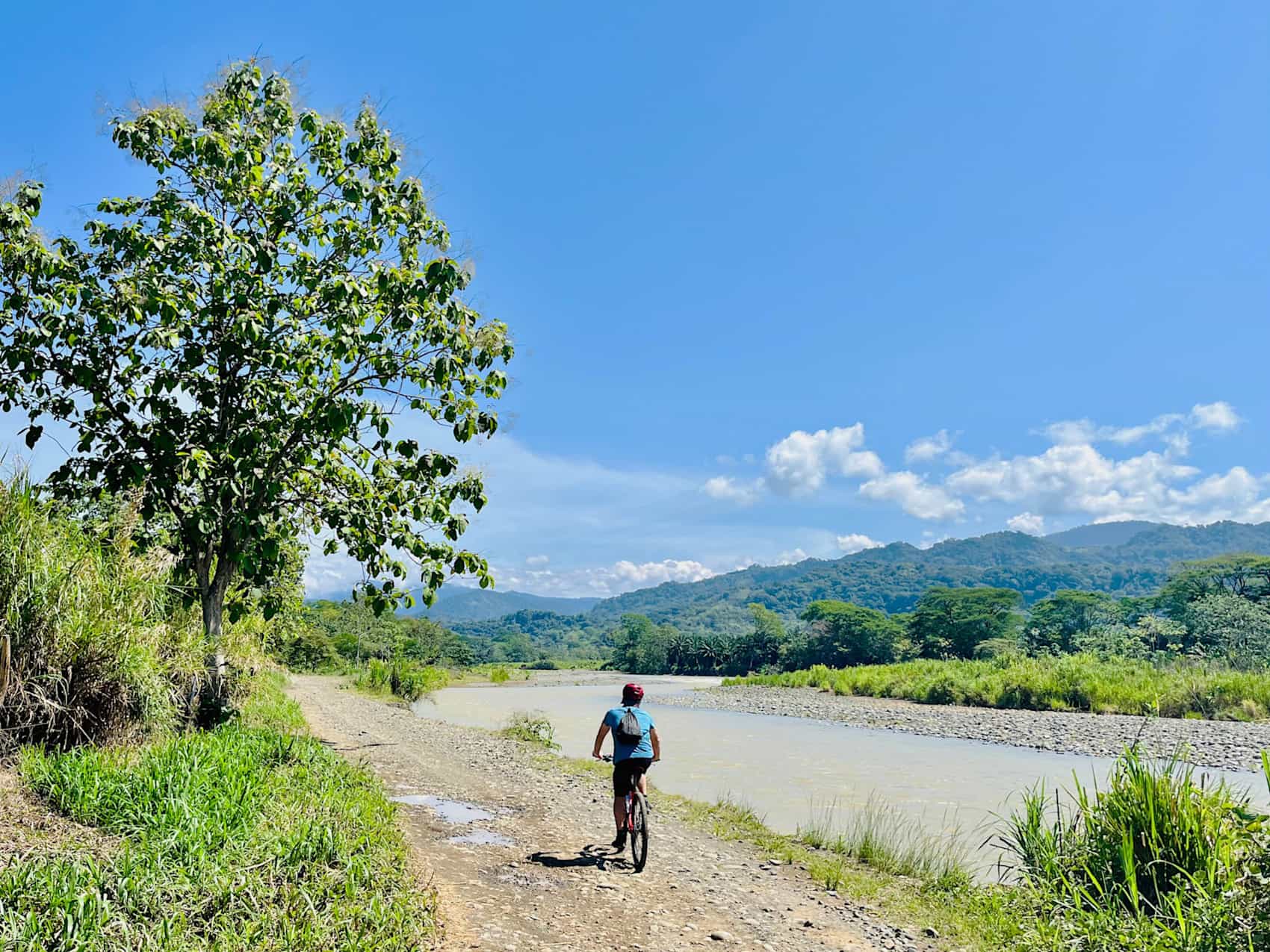
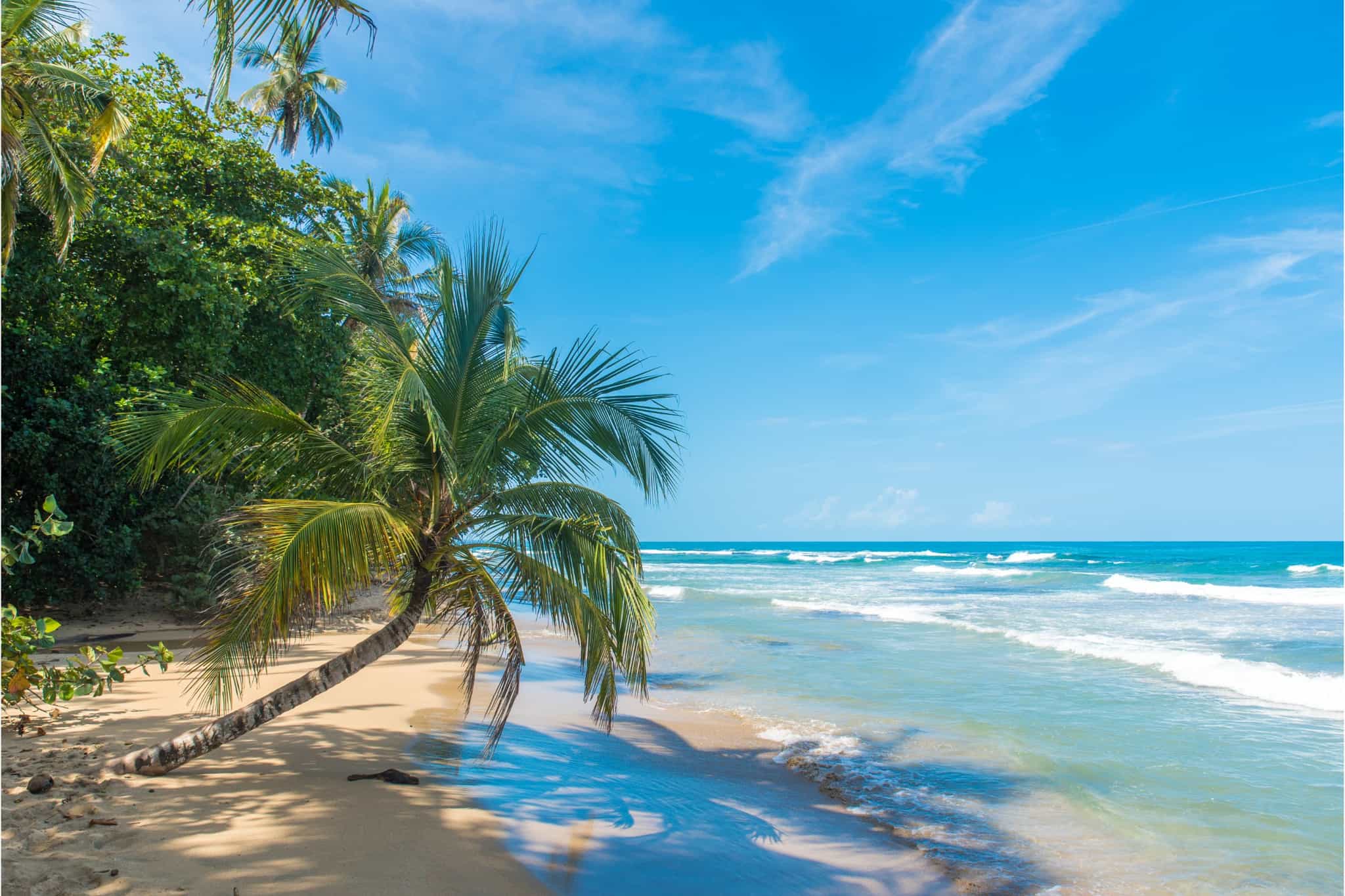
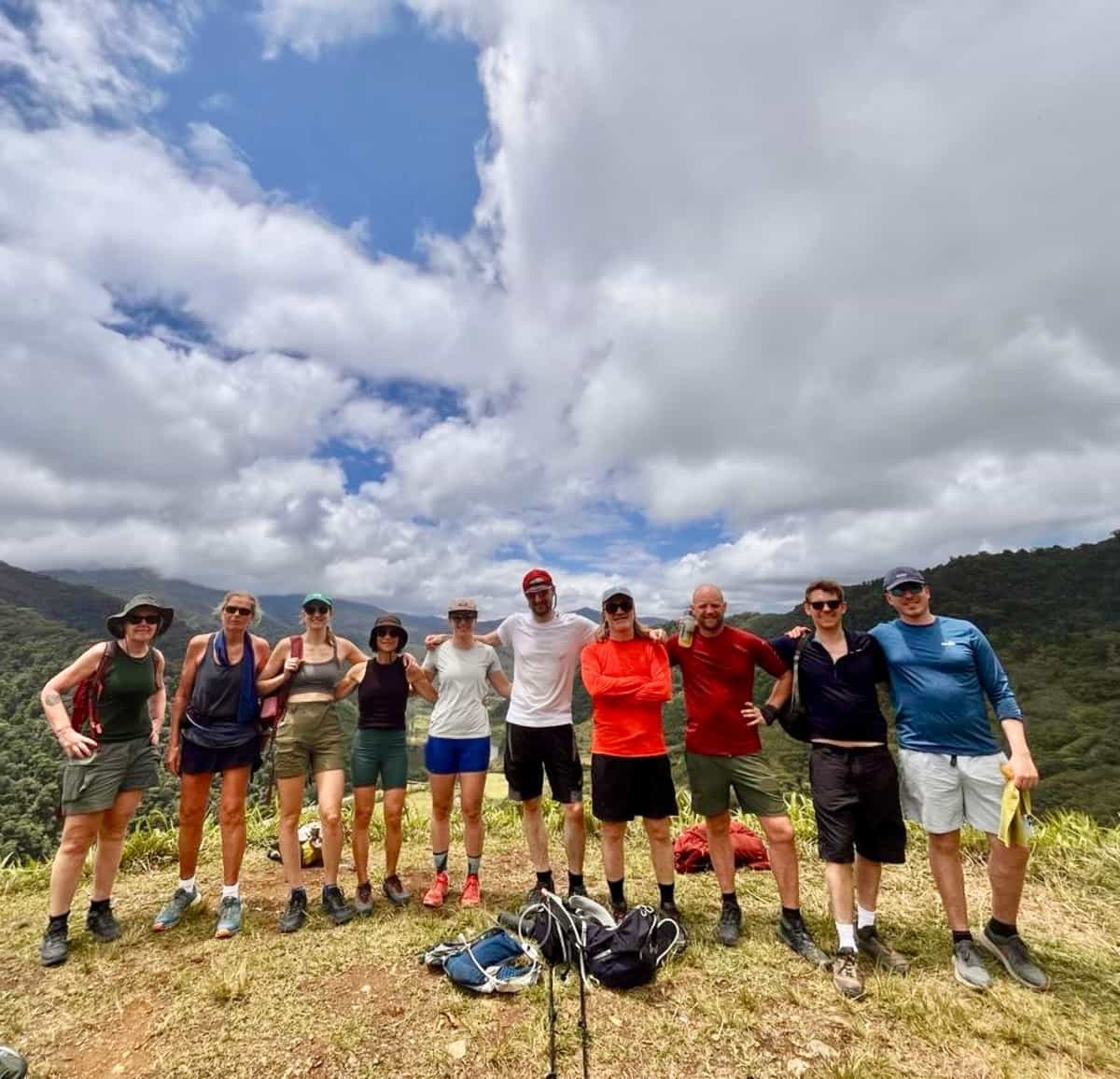
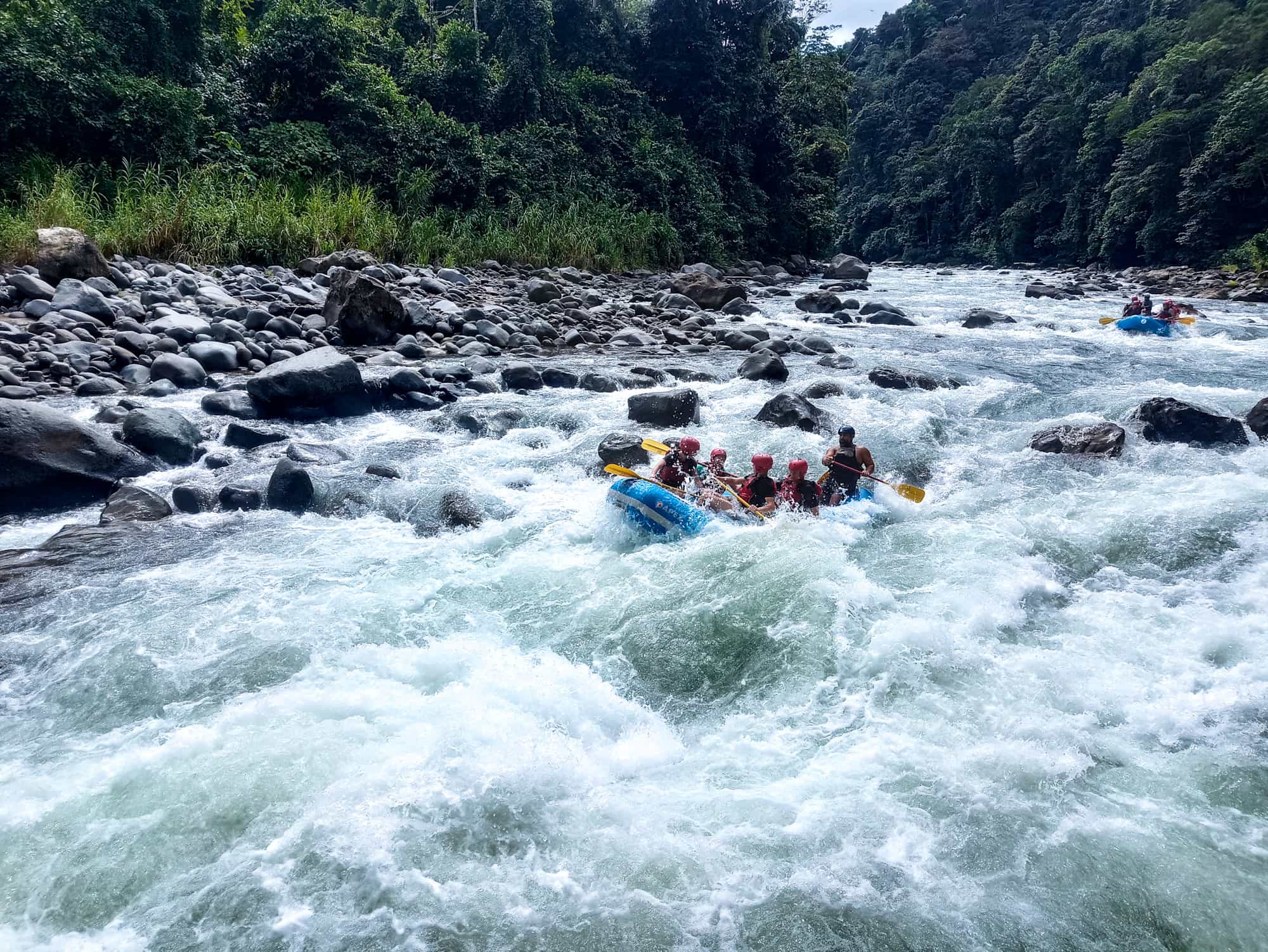
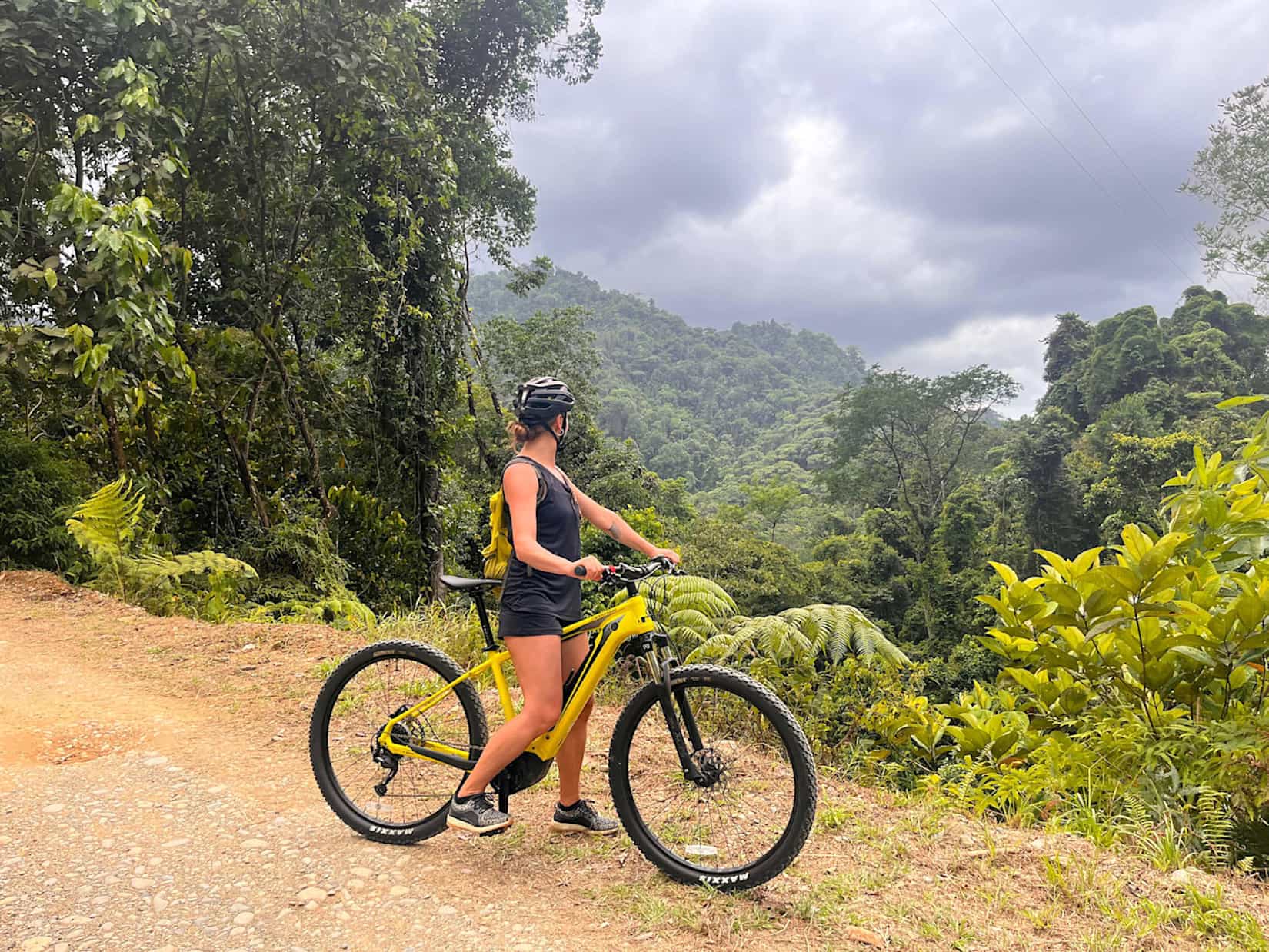
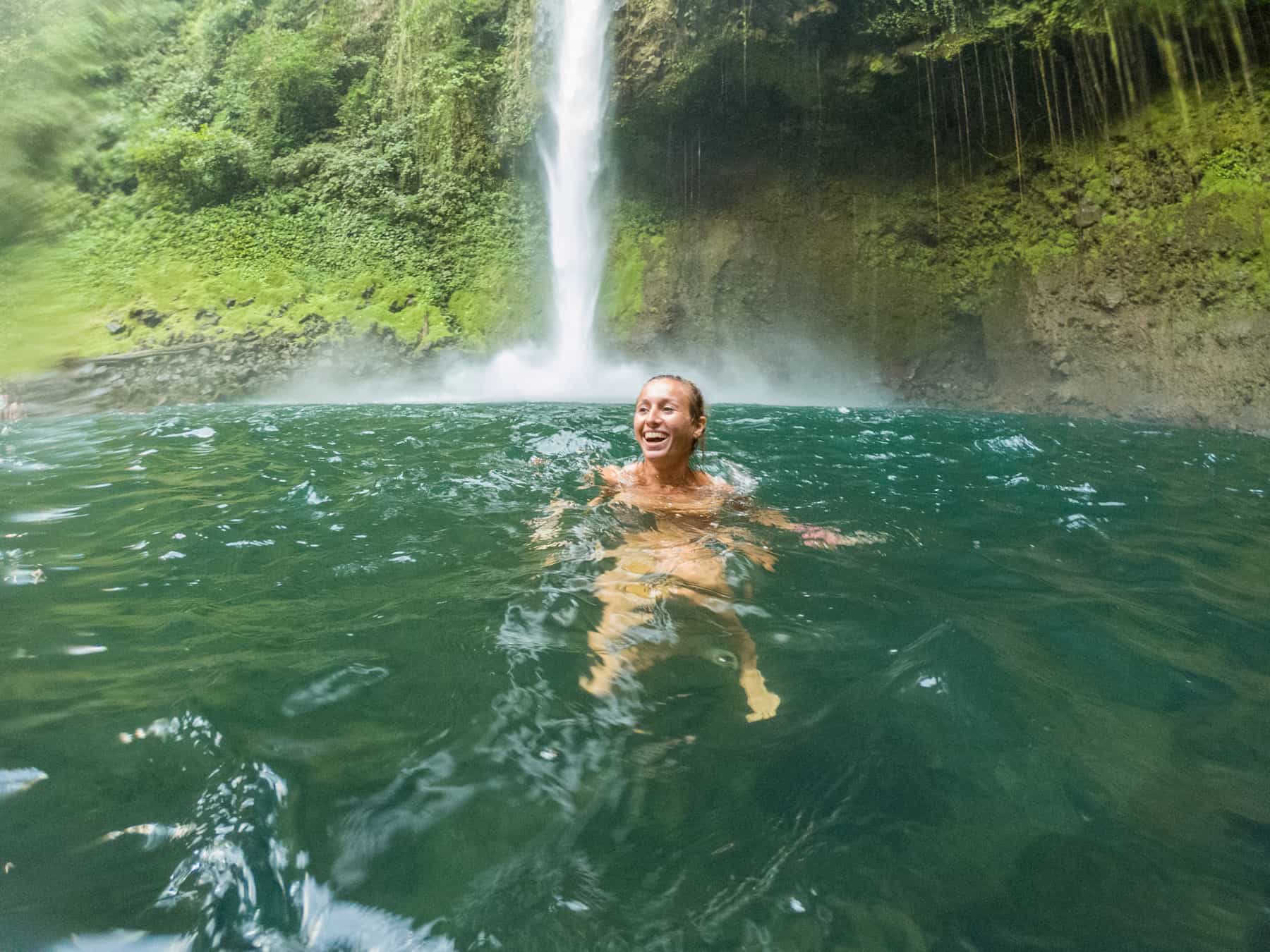
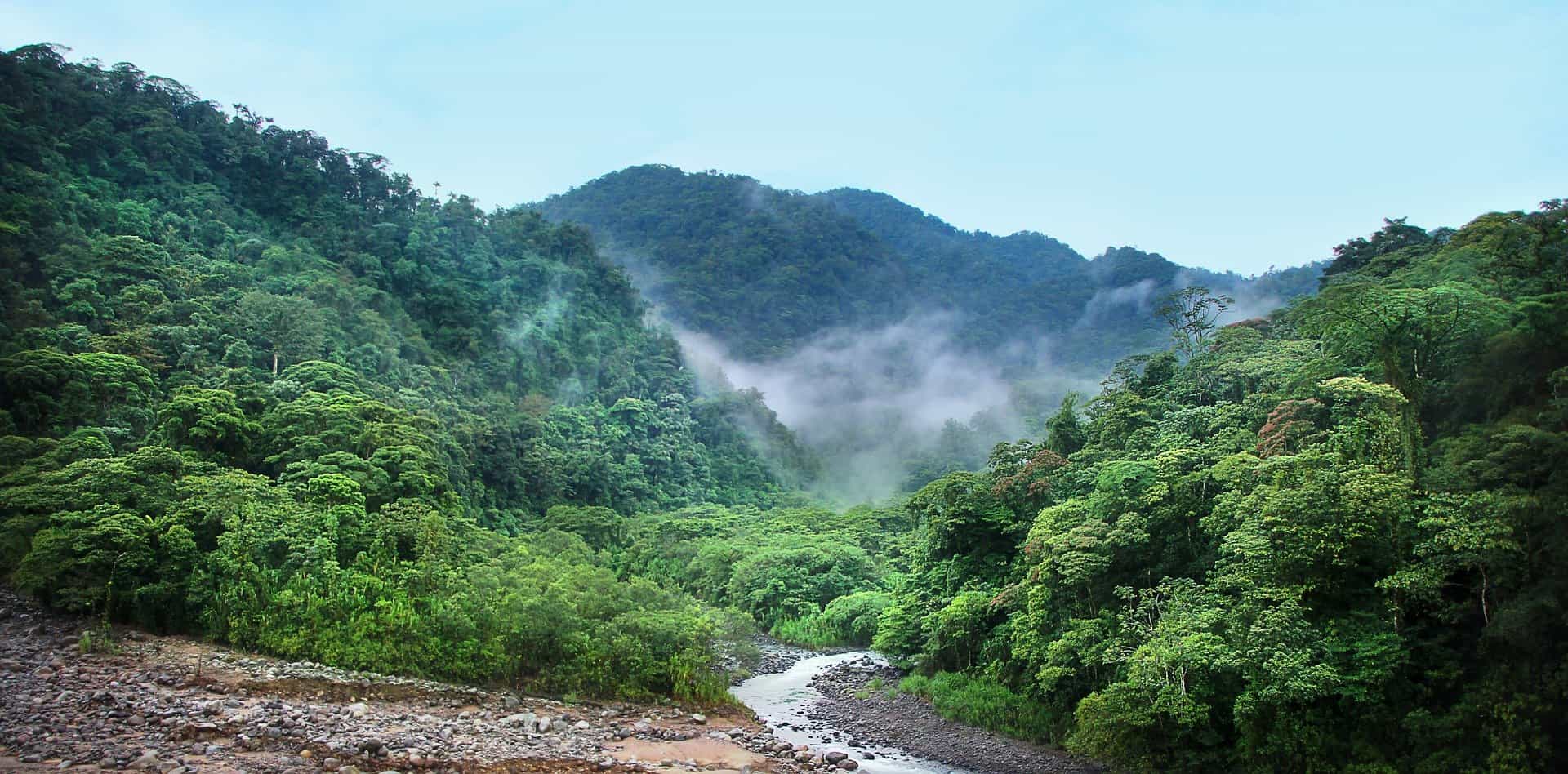
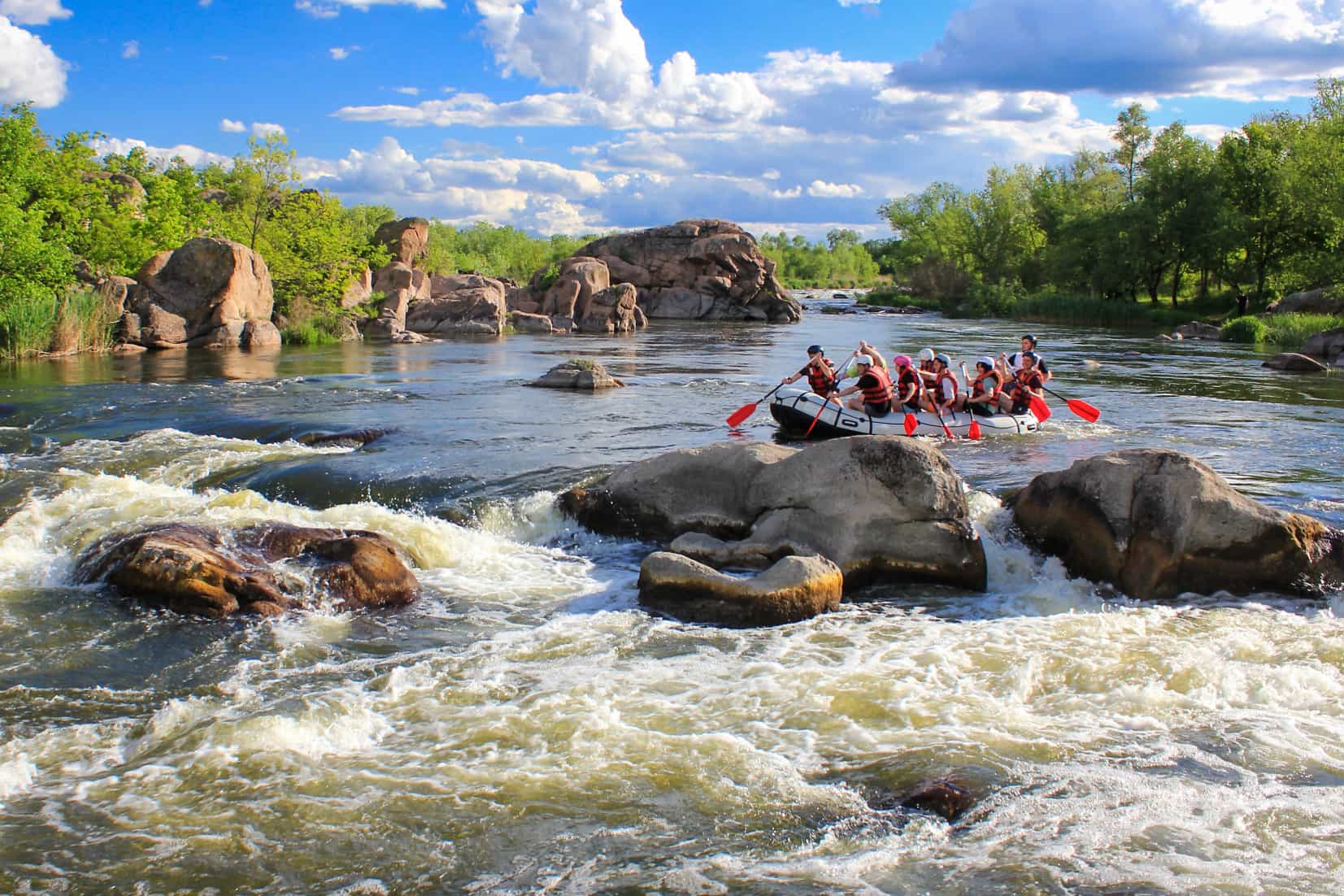
Traverse Costa Rica from the wave-lapped west to the palm-fringed east, powered by your own effort (and pedal-assist from your e-bike when you need it)
Ride, hike, raft and kayak through extraordinarily biodiverse forests teeming with wildlife, before heading up and over the Continental Divide
Stay in riverside eco-camps along the pristine Pacuare River, waking to birdsong and cooling off in hidden swimming spots and secret cascades
Craving more of a challenge? Check out our much-loved classic version of this trip for a pure pedal-powered adventure
Key Information
Day 1
Welcome to Costa Rica
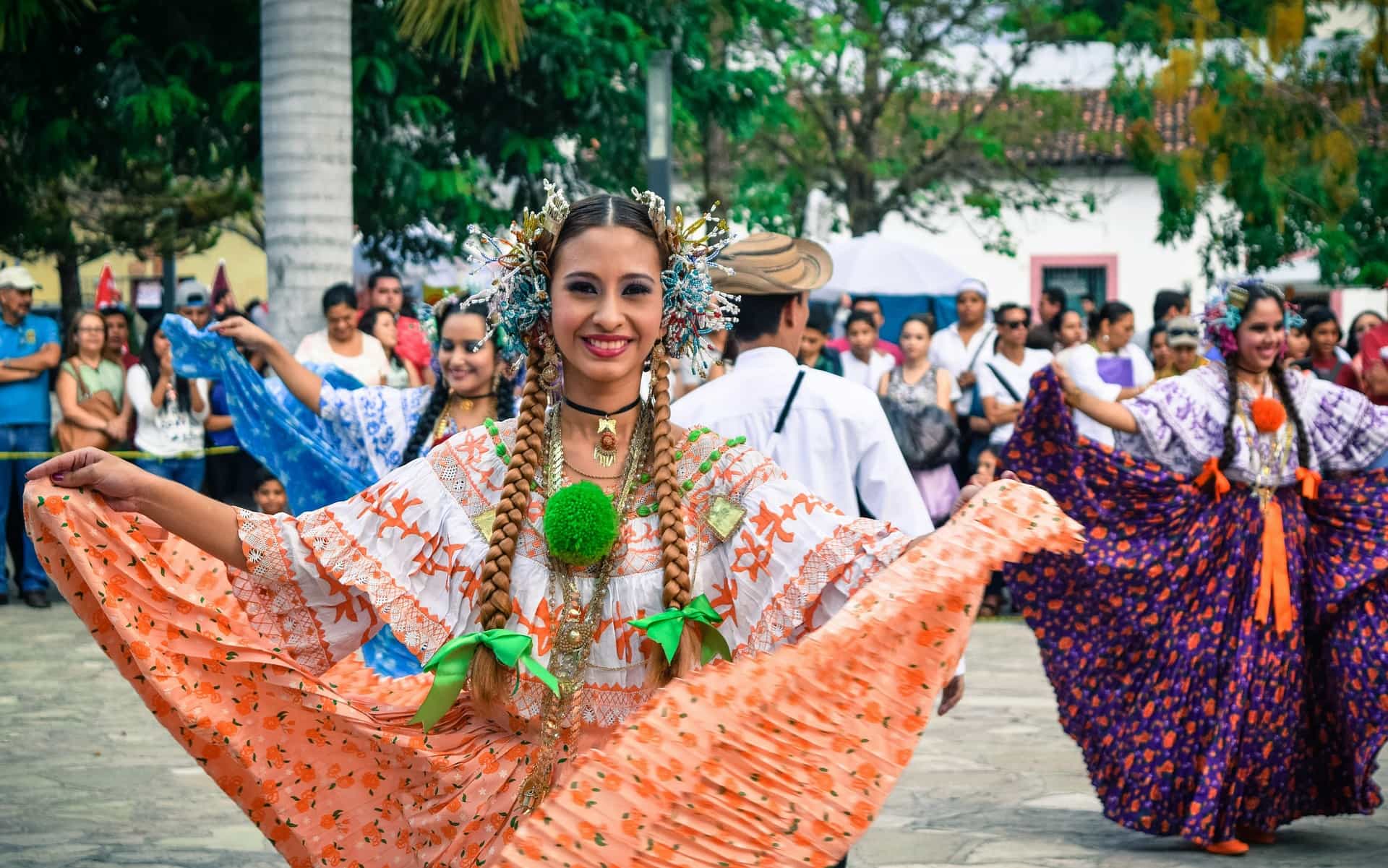
Arrive in Costa Rica and make your way to your hotel in San Jose. If time allows, head out for a wander, or simply unwind and prepare for the journey ahead.
Day 2
The Pacific Coast
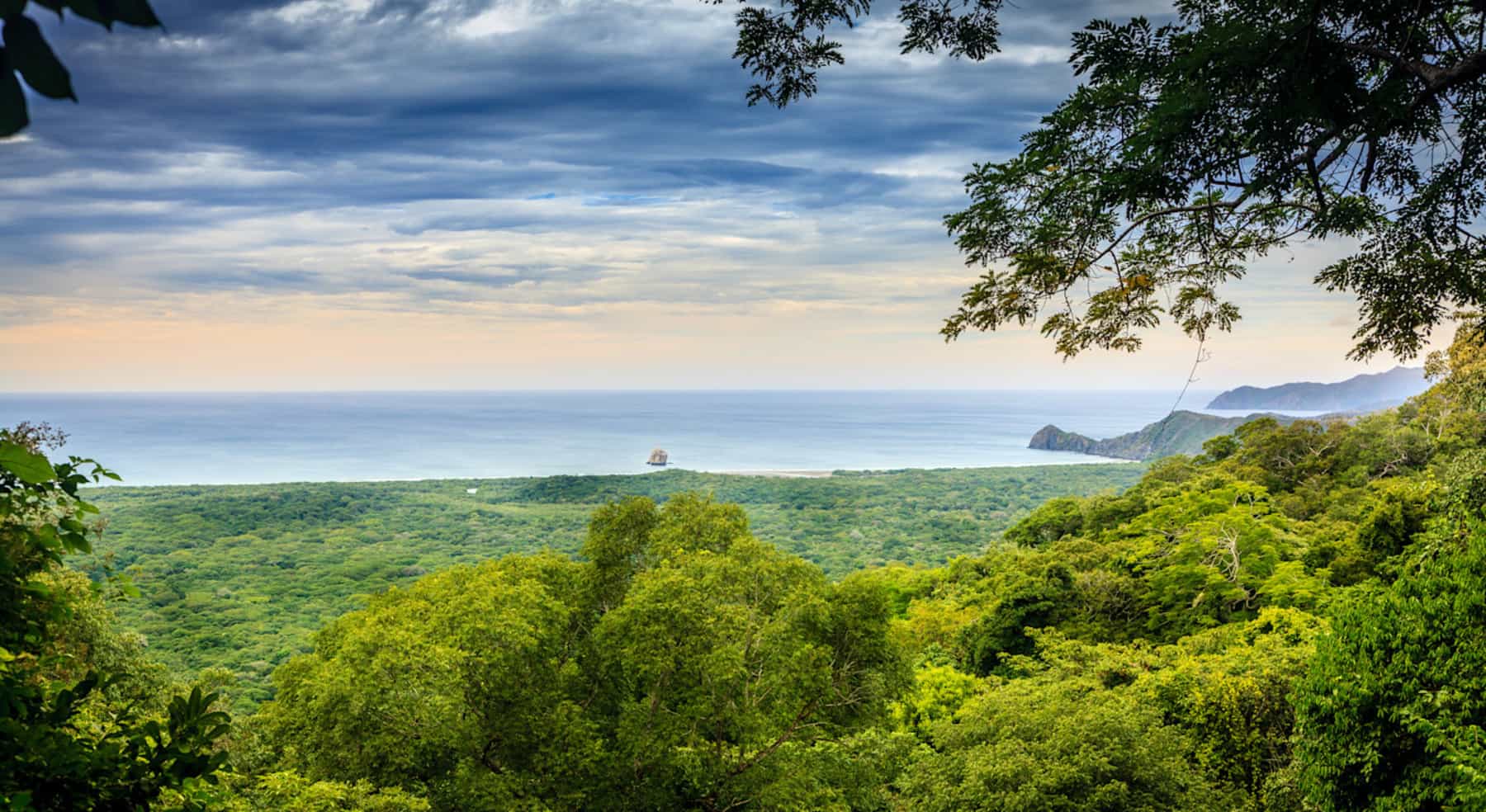
Hop into your transfer to the Pacific Coast, where your coast-to-coast journey begins. Once you arrive, settle into the fishing town of Quepos, beside Manuel Antonio National Park. You can stretch out on the beach, explore the park’s rich wildlife, then share dinner and a trip briefing with your group.
Day 3
The adventure begins

Hiking
E-bike
Start the day with fresh fruit and coffee before hitting the trail on your e-bike. The first climbs give you a chance to get comfortable with the bike’s power assist while taking in wide views of the Pacific coast. Roll into the village of Esquipulas for a hearty second breakfast, then swap pedals for hiking boots and head into the cooler mountains of central Costa Rica. Tonight you’ll camp in the Naranjillo valley, surrounded by the sounds of the forest.
Day 4
Santa Maria Village
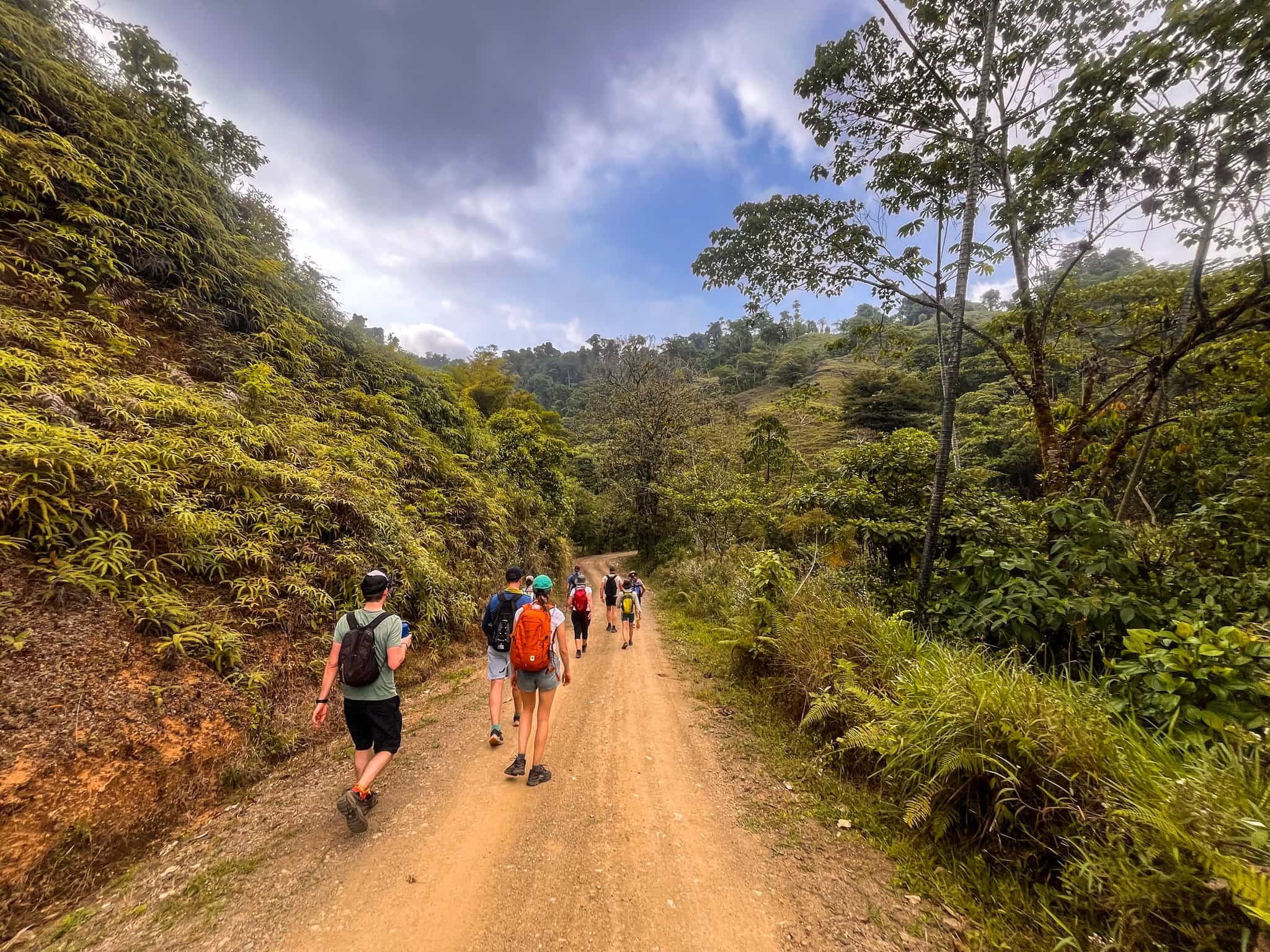
Hiking
E-bike
Set out on foot towards the Continental Divide, where a steep 3km stretch known as 'Cemetery Hill' will put your legs to the test. From the small town of San Lorenzo, hop back on your e-bike and ride along winding roads into the lush valley where you'll find the village of Santa Maria. Here you can tuck into traditional Costa Rican fare before settling into a rustic cabin, surrounded by coffee plantations and mountain air.
Day 5
Over the divide
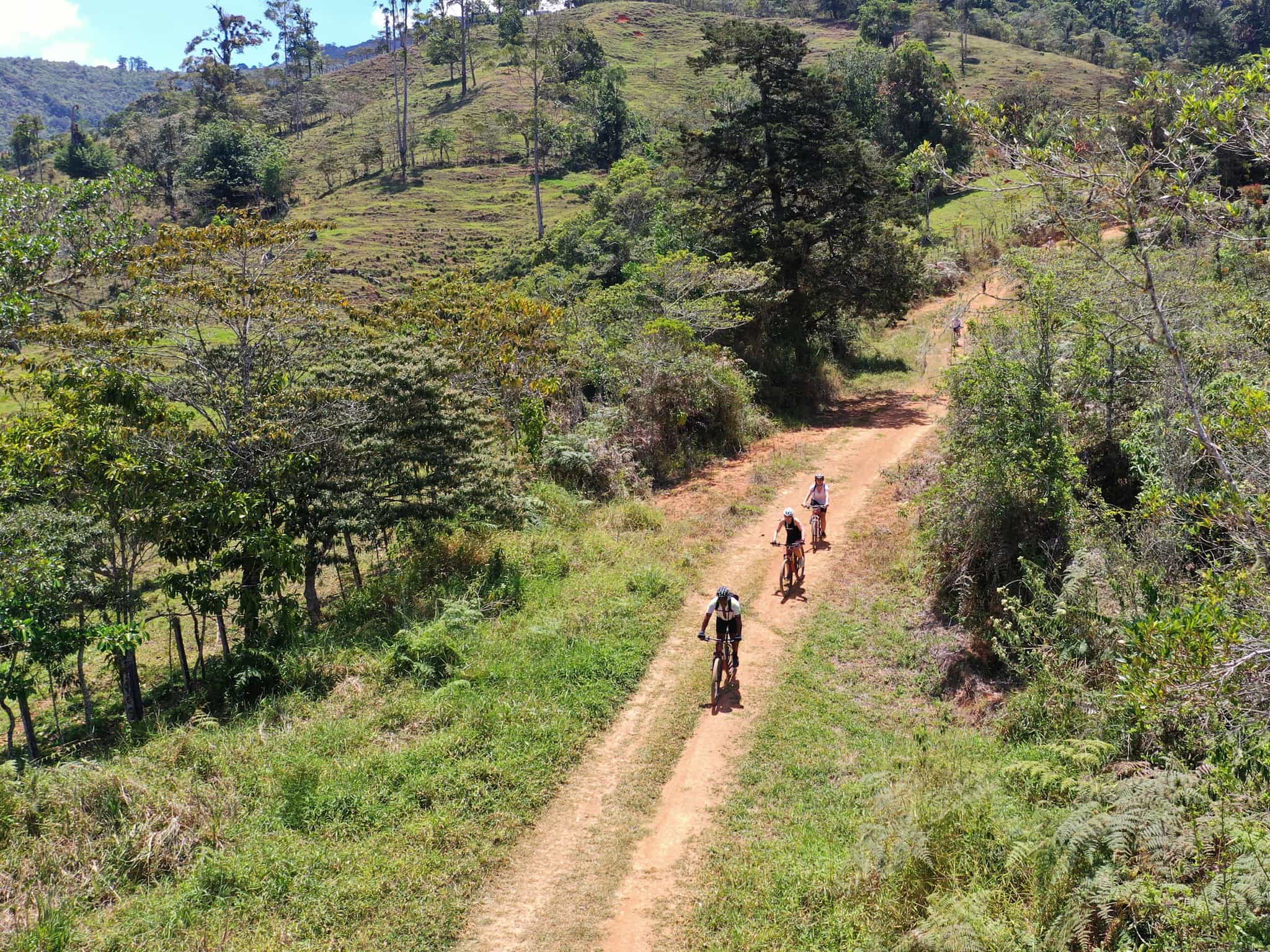
E-bike
Today’s ride takes you up and over Costa Rica’s Continental Divide, the mountainous spine that splits the Caribbean and Pacific watersheds. With a little help from the e-bike’s pedal assist, you’ll crest the summit at 2330m – the highest point of the journey. From here, gaze out across Guanacaste’s dry plains, the Nicoya Peninsula and a chain of distant volcanoes before plunging down dirt roads on a thrilling descent into the Orosi Valley, where fertile pastures and coffee-covered hillsides stretch in every direction.
Day 6
Tapantí cloud forest

Hiking
E-bike
Set off on your e-bike along the river this morning, before climbing into the vast Tapantí National Wildlife Refuge. Leave the bike behind and hike further into the mountains, well beyond where wheels can reach. Walk beneath the cloud forest canopy, dwarfed by trees draped in ferns, bromeliads and moss. As the terrain levels out, pitch camp near the settlement of Taus and share a hearty dinner under the stars.
Day 7
The Pacuare River

E-bike
Rafting
Ride your e-bike towards La Cruz, the gateway to the wild Pacuare River. Pause for lunch on the riverbank, then swap pedals for paddles as you raft through untouched rainforest, sheer canyon walls and the roar of waterfalls. Tonight’s camp is El Nido del Tigre, named after the giant native ginger plants that blanket the area. Set between the river and the forest, it’s the perfect spot to take a wander – eyes peeled for toucans, boa constrictors and sloths – or simply stretch out in a hammock and soak it all in.
Day 8
Rest day

Slow the pace with a full day at this hidden riverside camp. Venture into the primary forest, or follow jungle trails to waterfalls and crystal-clear pools where you can swim and drink the water straight from the source. The river itself is perfect for a refreshing dip, while the hammocks make the perfect spot to get some rest. With the rainforest here in a pristine, rarely visited state, you’ll have the rare chance to soak up its sounds and solitude without interruption.
Day 9
White water
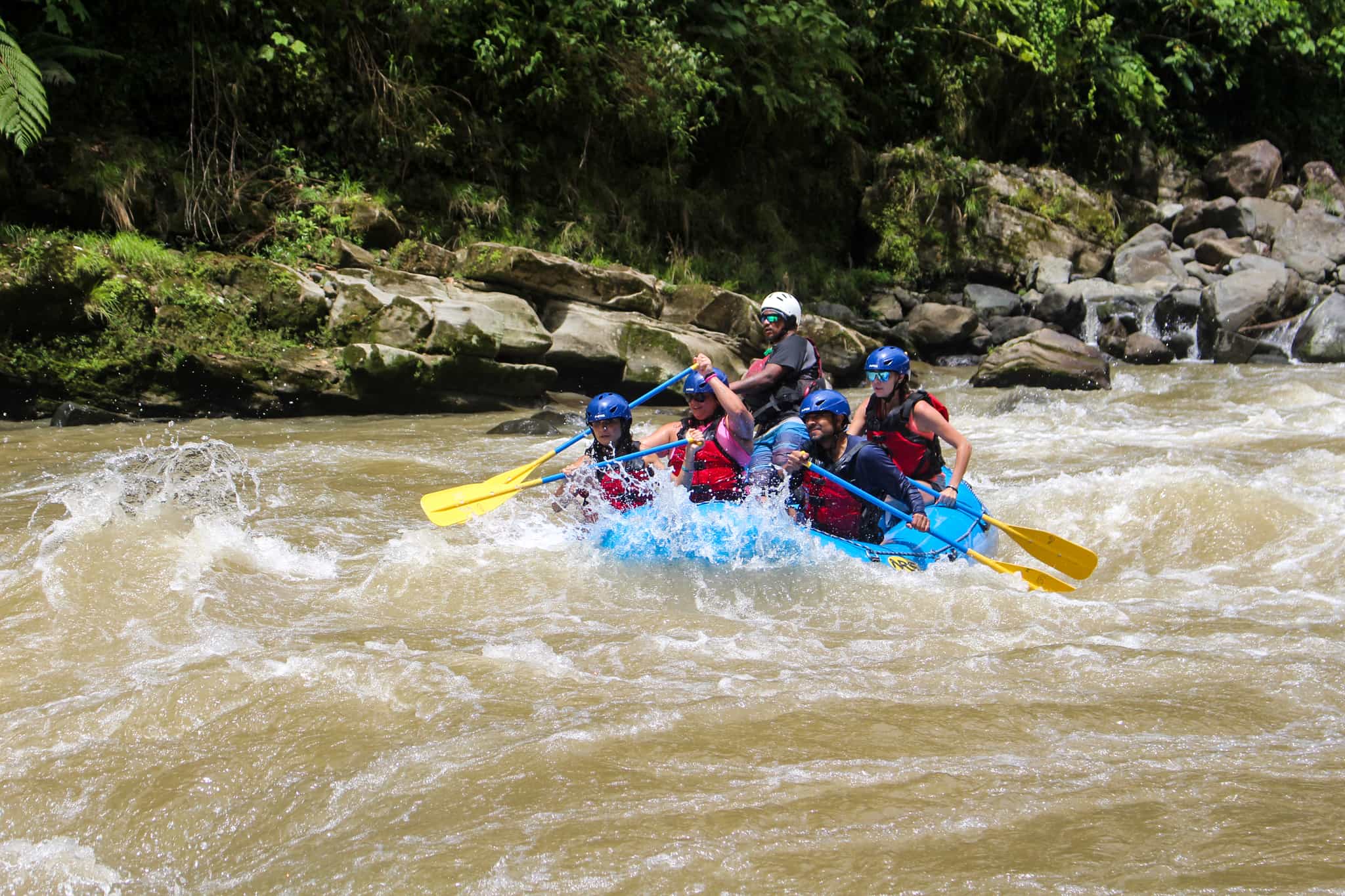
Rafting
Carry on downstream along the Pacuare, drifting through narrow canyons carved by the river. Tackle a mix of lively Class II and III rapids, broken up by calmer stretches where you can watch the rainforest slip by and look out for wildlife along the banks. Step ashore for a hike to cascading waterfalls and have lunch by the water. As the forest thins, the landscape opens into banana plantations – your stop for the night is Finca Pacuarito, where the changing scenery marks the next stage of your journey.
Day 10
The Caribbean Sea
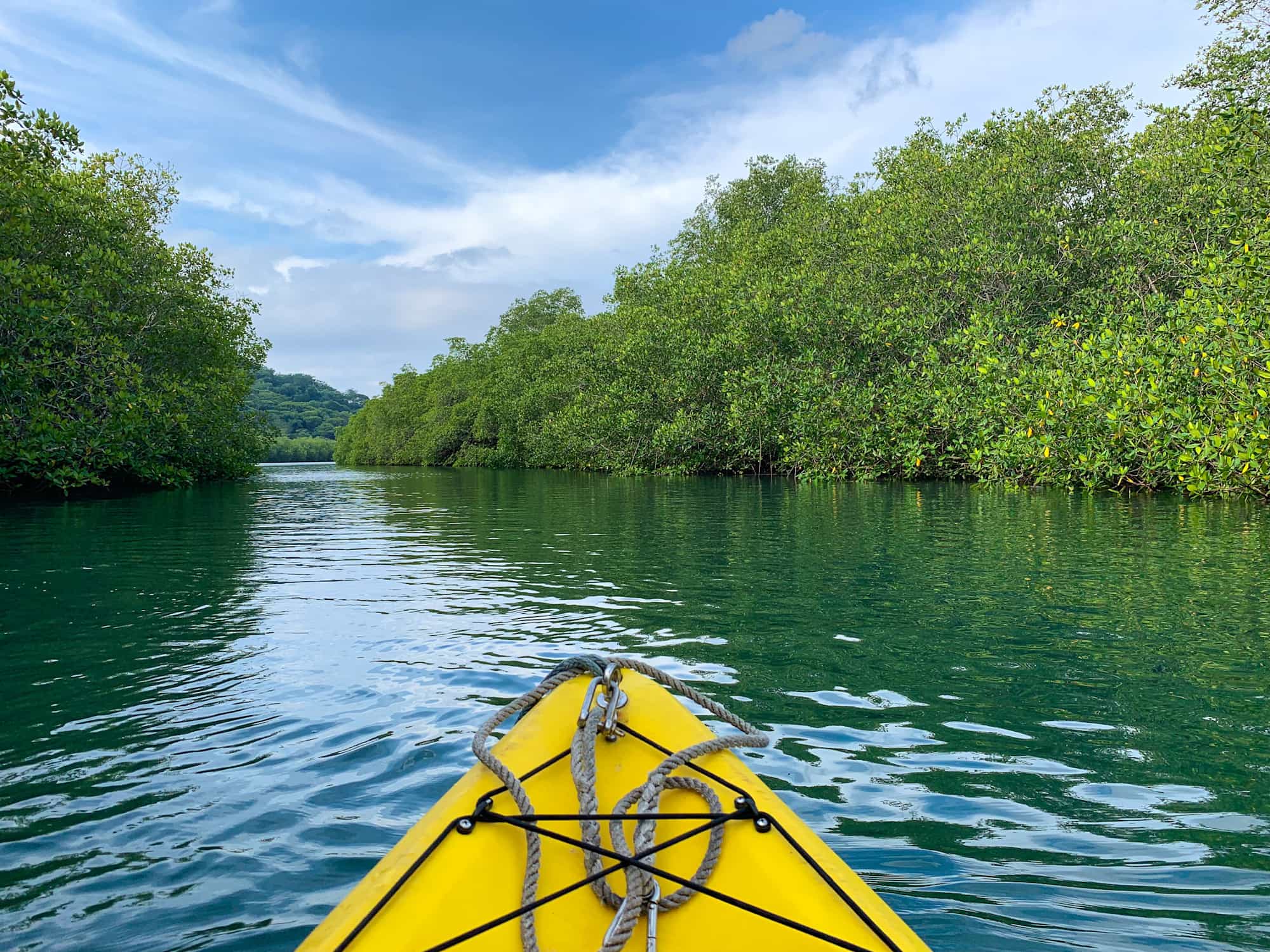
E-bike
Kayaking
Take one last ride on your e-bike through the plantations to the town of Freeman. From here, switch to a kayak for the final push towards the coast. The rapids of the highlands give way to calm tropical lowlands, before the river carries you gently into the Caribbean Sea. Mark the end of your journey with a well-earned swim and some beach time – you've earned it!
Day 11
Final beach time and back to San Jose
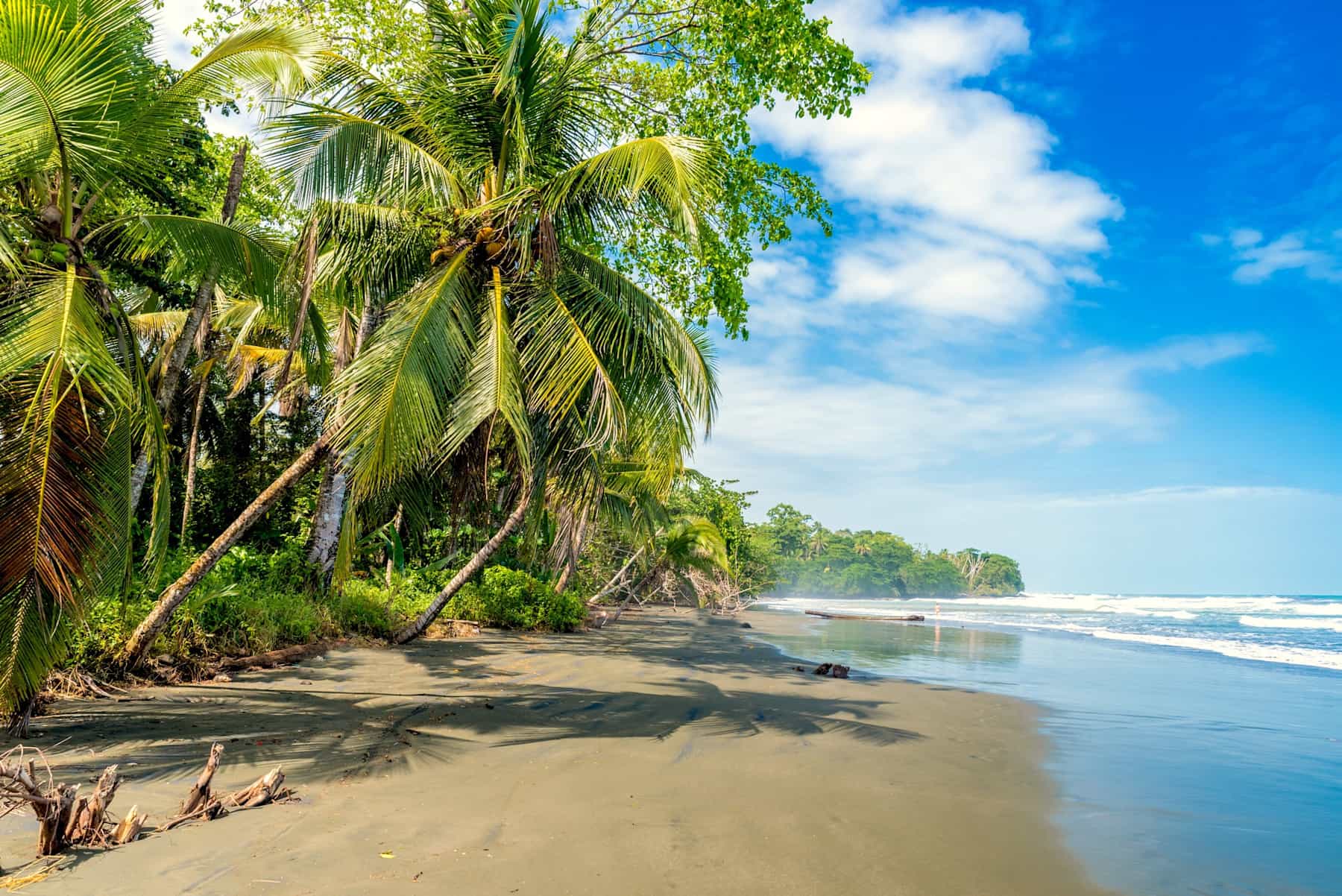
Spend a final morning on the sand before driving back to San Jose through the cloud forest and misty peaks of Braulio Carrillo National Park. Raise a glass to completing your coast-to-coast journey – crossing an entire country is no small feat!
Day 12
Goodbye Costa Rica
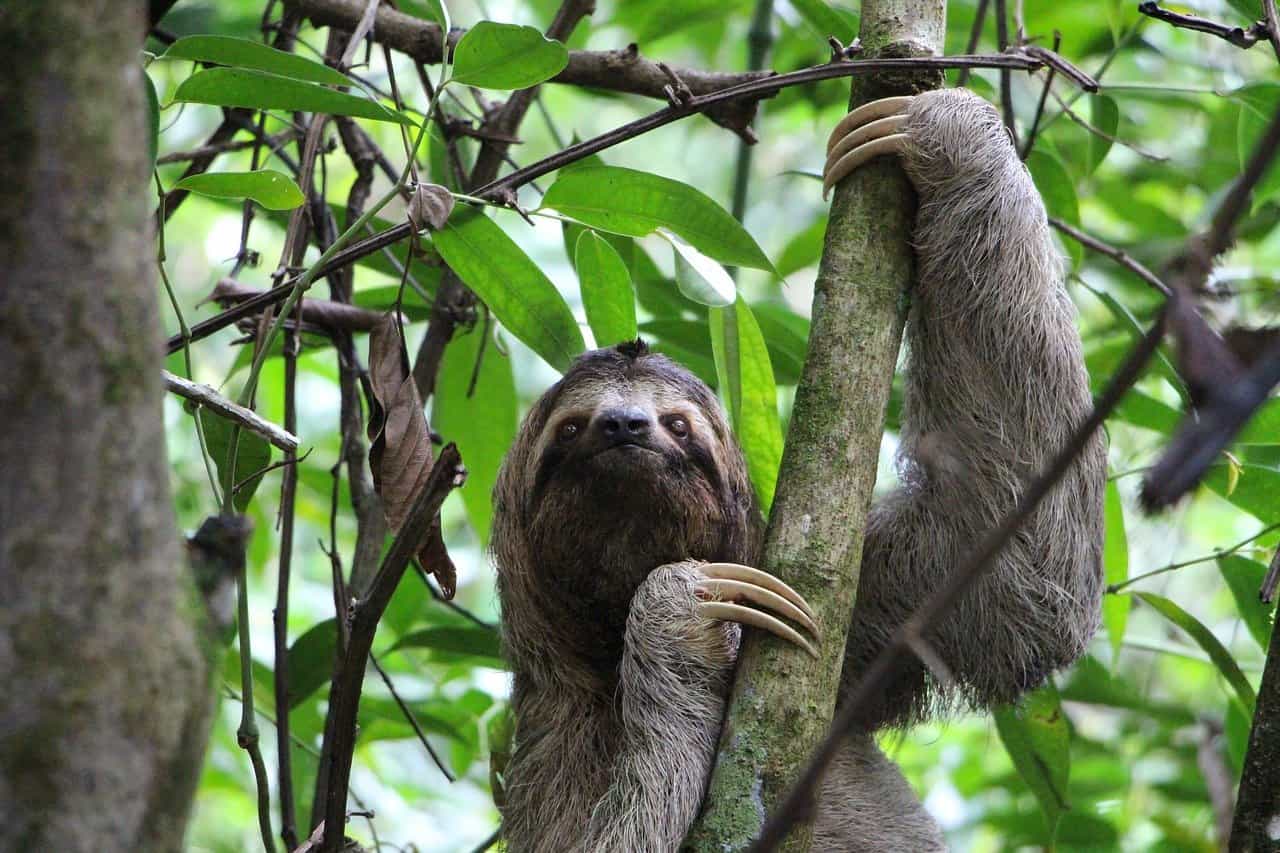
After breakfast, head back to the airport in time for your flight home, or explore a little more of this incredible country.
The Area
Logistics
Starts
Juan Santamaria International Airport, San Jose (SJO)
Any time on Day 1
Ends
Juan Santamaria International Airport, San Jose (SJO)
Any time on Day 12
Transfers
Airport transfers are included if you arrive on Day 1 and depart on Day 12; just let your host know your flight details. If you arrive and depart outside of these days, your host can arrange an airport transfer for you for an extra cost – see Optional Extras for the price.
Travel options
There are regular flights to Costa Rica from major airports across the UK, Europe and North America.
Day 1
Breakfast
Lunch
Dinner
Day 2
Breakfast
Lunch
Dinner
Day 3 – Day 4
Breakfast
Lunch
Dinner
Day 5
Breakfast
Lunch
Dinner
Day 6 – Day 9
Breakfast
Lunch
Dinner
Day 10
Breakfast
Lunch
Dinner
Day 11
Breakfast
Lunch
Dinner
Day 12
Breakfast
Lunch
Dinner
What is the food like?
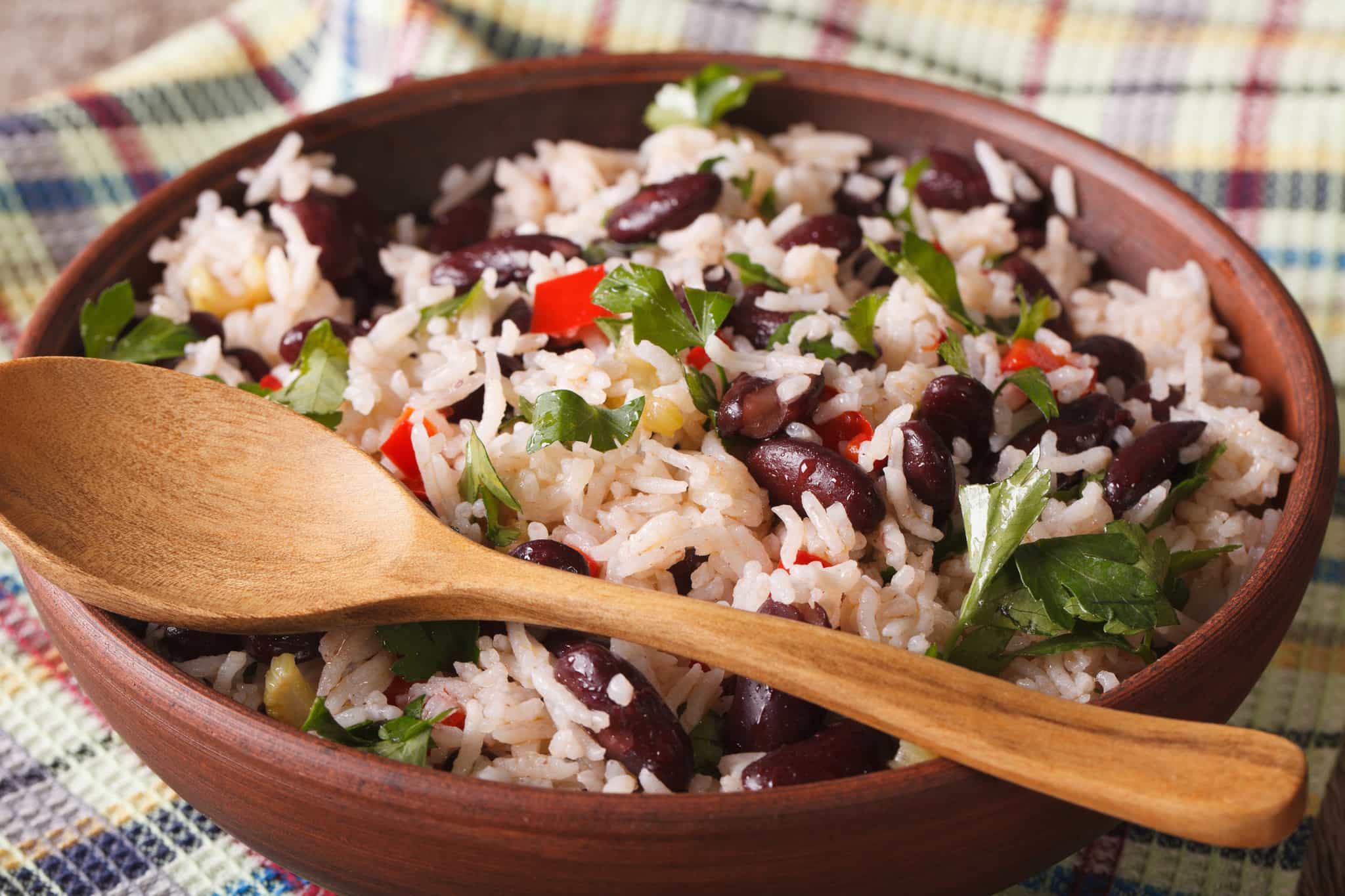
A classic plate of Costa Rican food includes rice and beans, salad, fried sweet plantains and either fish, chicken, pork or beef. Some will also have cheese, french fries or grilled vegetables. Gallo pinto is another classic Costa Rican staple: slow-cooked rice and beans with onions, peppers and coriander (cilantro). This dish often forms part of the Costa Rican breakfast: gallo pinto with eggs, fried cheese, sweet plantains and homemade corn tortillas. There'll be plenty of other Latin American and tropical foods available, and on both coasts you’ll find pipa fria: a whole, cold, fresh coconut.
Vegetarians, vegans and other dietary requirements and allergies can be catered for – please just request on your passenger info form.
What is the accommodation like?
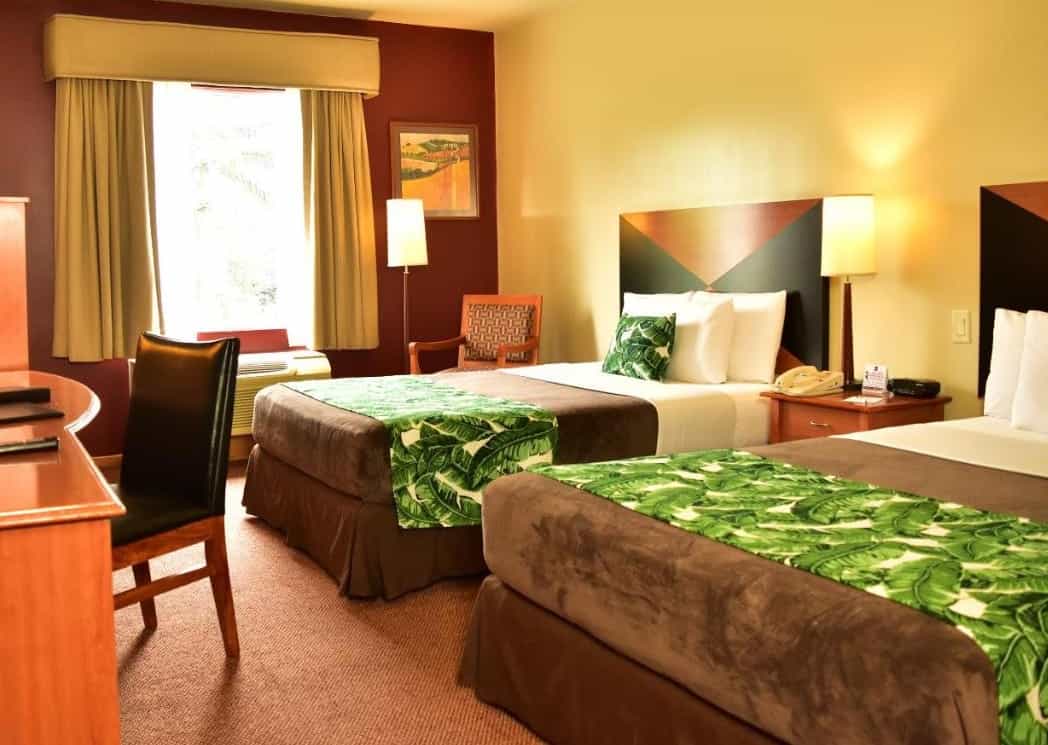
San Jose
You'll stay in a 3-star hotel in the centre of town, for example the Hotel Sleep Inn Paseo Las Damas which is opposite España Park and the Modern Art Museum. The exact hotel will be confirmed by your local host in your pre-departure information.
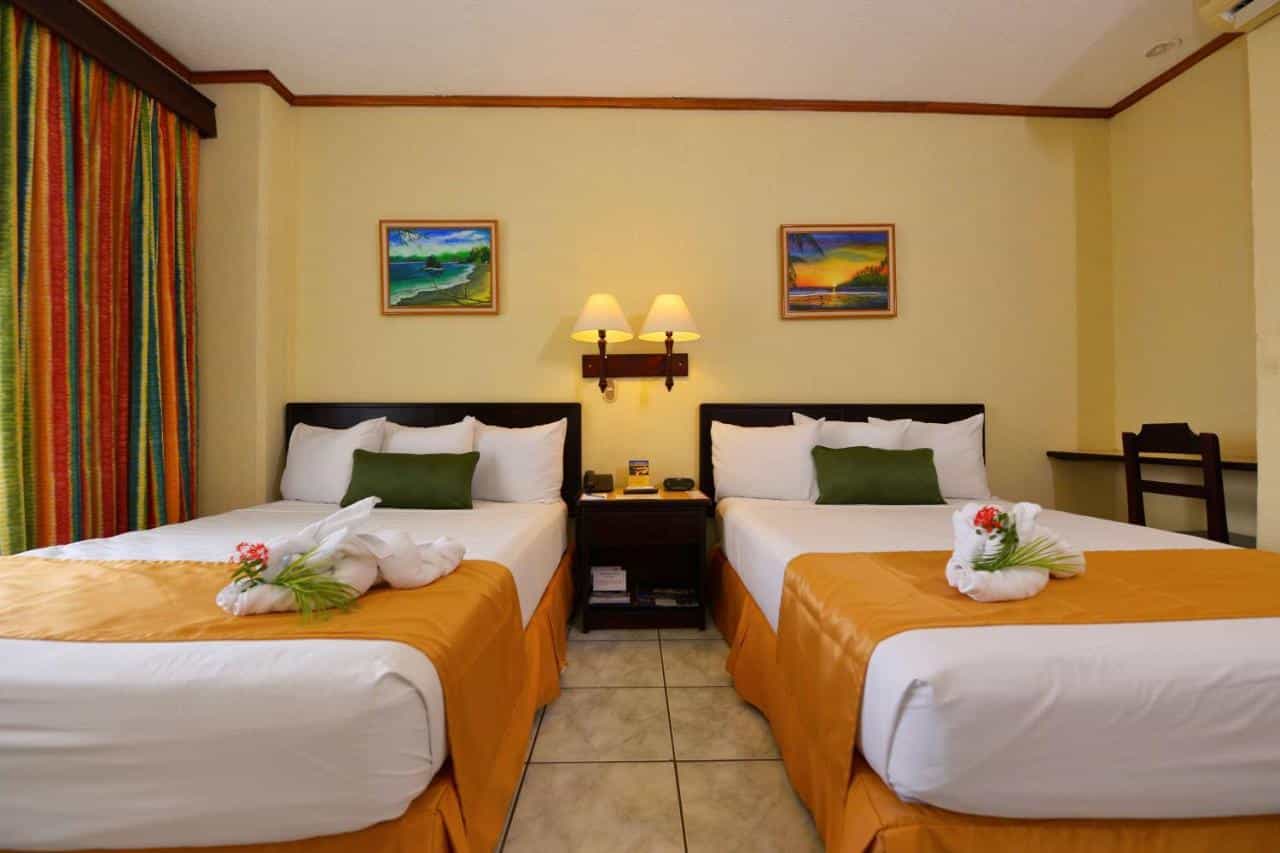
The Pacific Coast
You'll stay at Kamuk Hotel and Spa in Quepos, just minutes from Manuel Antonio National Park and steps from the Pacific Ocean.

The Expedition
You'll stay at campsites and rustic cabinas as you progress on your journey. Highlights include El Nido Del Tigre, an authentic Costa Rican camp that’s passionate about sustainability in the Bajo Tigre rainforest.

The Caribbean
You'll celebrate the end of your journey with a night at the boutique Hotel Casa de las Flores in Cahuita National Park. The hotel is close to the beach and surrounded by an area renowned for its incredible biodiversity, where you're likely to see white-faced capuchin monkeys, howler monkeys, iguanas, toucans, sloths and a variety of birds and butterflies.
Upgrades
For solo travellers looking for their own space, an optional private room and tent can be booked for an extra charge, see Optional Extras for the price. Please request this at the time of booking (this is subject to availability).
This trip has been rated as Challenging
Crossing 250km coast-to-coast in 10 days is a challenge, so strong fitness and a sense of adventure is vital. You'll also need to be happy swapping from e-bike, to hiking boots, to a multi-person raft, to a single person kayak. You do not need kayaking experience, although upper body strength is useful here. The rafting is from Class II up to Class IIII rapids; no experience is needed, as your guides will give you a full instruction on how to tackle the rapids as a team, with an experienced rafting guide captaining each raft.
The e-biking on the trip takes place on a combination of paved roads and dirt roads going through dry forests, jungles, and cloud forests. Most of the riding is not that technical, and your guide will give you a heads up before the more difficult parts. The pedal-assist e-bikes will power you up the valley climbs and make the longer rides more accessible – even for less-experienced cyclists – although some experience in riding back-to-back days is recommended. There is always plenty of time each day to ride at a steady pace, stop for snacks, take pictures and regroup.
Do I need to have experience riding an e-bike? E-bikes are designed to be user-friendly and accessible for all skill levels. That said, having some off-road experience and basic bike-handling skills is important, as e-bikes tend to be heavier than regular bikes. It's also helpful to be comfortable riding a variety of trails, including downhill sections, along with managing your balance, and making sharp turns, as this will make your experience more enjoyable.
Costa Rica's dry season, considered summer by the locals, runs from mid-November to April and temperatures vary significantly depending on the region and elevation. Along the coast and the Caribbean flatlands, temperatures average 25–34˚C (77–93˚F). At the mid-level elevations temperatures average between 17–26˚C (63–79˚F).
We’re still waiting to collect any reviews from other travellers on this trip. However, all our hosts go through an extensive vetting process to ensure that your adventure is awesome.
Itinerary Activities
- Guided hiking, cycling, rafting and kayaking expedition across Costa Rica over six days
- Rest day on Day 8
Guides
- Expert, local, English-speaking guides
Accommodation
- 2 nights in a centrally located hotel in San José
- 1 night in a simple hotel in Quepos
- 7 nights camping at campsites and rustic cabinas
- 1 night in a boutique hotel in Cahuita National Park
Meals
- All (11) tasty breakfasts
- 8 hearty lunches
- 7 traditional Costa Rican dinners
Transfers
- Arrival transfer from San Jose Airport at any time on Day 1
- Departure transfer to San Jose Airport at any time on Day 12
- All transfers during the trip
Equipment
- Cannondale Trail Neo 4 E-bike (frame size medium & large) or Specialized Tero 3 E-bike (frame size small & extra large)
- All rafting equipment
- All kayaking equipment
- Tent, sleeping bag, and sleeping mats for the camping nights
Permits
- All permits and entry fees
Our trips are hassle-free by design. We include all the activities and equipment, as well as many of the meals, so you can simply rock up with your rucksack and share the adventure with your new pals.
Travel to and from the trip
Our trips do not include flights, trains or other travel to the start point and back from the end point.
Tips
Tips are not included in the trip cost. These are entirely at your discretion; however, as a guideline we recommend budgeting the following:
- $8-10 (USD) per person, per day for the expedition leader
- $6-8 (USD) for support staff
Of course, you are free to tip as much or little as you like and the amount should be reflective of your perception of service and quality - a tip is not compulsory and should only be given when you receive excellent service.
Travel insurance
Travel insurance is compulsory for all of our adventures, and you'll need to provide your policy details before departure. Your insurance should offer adequate cover for overseas medical treatment, evacuation/repatriation, your baggage and equipment, and the specific activities involved in your adventure. We also recommend ensuring your policy includes cancellation and curtailment cover, in case you're unable to join your trip due to unforeseen circumstances such as illness.
Standard travel insurance may not cover all the activities included in your adventure, so it's essential to check the details carefully. There are adventure-specific providers that many travellers have used in the past, such as True Traveller (for those based in the UK or Europe), or Rise + Shield, both of which offer cover for a wide range of adventurous activities.
Please make sure your chosen policy meets your individual needs and covers all aspects of your trip.
Visas
Visa requirements often change, and you are responsible for obtaining any required visas for this trip. Please check with your nearest embassy or consulate for up-to-date advice.
Personal Expenses
You know your own spending habits best, so please budget an appropriate amount for things like optional meals and drinks, shopping, optional activities, and laundry.
What's included?
- All your kayak, rafting and e-biking gear (except for bike helmet)
- All-season sleeping bag
- Sleeping mat
What's available to hire?
- Bike helmet (for your own comfort, we advise bringing your own if you can)
What do I need to bring?
SLEEPING
- Sleeping bag liner (optional)
BAGS
- Soft overnight duffel bag or rucksack
- Daypack (25+ litres)
- Daypack rain cover
- Drybag (optional)
FOOTWEAR
- Lightweight adventure shoes or hiking boots (worn-in)
- Sandals with snug straps (e.g. Teva style)
- Lightweight, fast-drying hiking socks
CLOTHES
- Lightweight rain jacket and rain pants (Gore-Tex, nylon or similar)
- Lightweight, comfortable pants
- Shorts or skirts (quick dry)
- Medium-weight wool or fleece jacket
- Shirts (poly-pro outer wear, for quick drying)
- Short sleeved and light-coloured long sleeved tops, for sun protection
- (Thermal) underwear
- Fast drying hiking socks
- Buff or bandana
- Sunhat (ideally with brim)
- Something to sleep in
- Swimwear
- Towel
- Sarong (optional, works as towel or quick cover-up)
BIKING GEAR
- Bike helmet
- Trainers or specific cycling shoes (for flat pedals, unless you bring your own clip in pedals)
- Bike shirts (optional)
- Bike gloves (can also be used for paddling)
- Padded shorts for cycling segments
- Bike water bottle
Note: feel free to bring your own pedals and seat if you want.
OTHER
- Trekking poles (optional)
- Sunglasses (UVA + UVB resistant) and keeper strap (you don't want to lose your sunnies in the river!)
- Headtorch or torch
- Spare batteries (camera, torch, etc)
- 2-3 reusable water bottles
- Prescription glasses or contacts (bring an extra pair)
- Passports (visas and copy of your passport)
- Travel insurance documents
- Insect repellent
- Waterproof sunscreen, 30+ SPF
- Earplugs
- Padlock for left luggage
- Universal travel adapter
- Power bank or solar charger
- Personal first-aid kit (inc. blister treatment)
- Personal items (biodegradable toiletries, sanitary wear etc)
- Alcohol hand-gel
Bike Helmet Hire
Payable Before Departure
Bike Helmet Hire
…
Pre/Post trip accommodation in San Jose (per room, per night) from
Payable Before Departure
Pre/Post trip accommodation in San Jose (per room, per night) from
…
Optional Private Room & Tent Upgrade, seasonal from
Payable Before Departure
Optional Private Room & Tent Upgrade, seasonal from
… Per person
Airport Transfer One Way (San Jose Airport to San Jose accommodation) from
Payable Before Departure
Airport Transfer One Way (San Jose Airport to San Jose accommodation) from
…
We partner with the World Land Trust to ensure this trip achieves Net-Zero emissions. We also support their Buy an Acre programme, helping local communities to buy and protect natural habitats in perpetuity.
What's the number?
It works out on average at 147kg of CO2 emissions per person, including all local transport, accommodation, food, activities, guides, staff and office operations.
The only thing it doesn’t include right now is flights and travel to the destination. We do make an overall estimate across all our customers separately, but as we don’t book flights, have customers from all corners of the world, and no way of reliably knowing their travel plans, we simply can’t include an individual number in the figure on display here. We’ve got a goal to fix that, so that when you book, there is a way to measure and mitigate the carbon emitted by your flight too.
But what does the number mean?
Yep, hard to picture eh? To give you an idea:
- Driving 1000 miles/1609km would be approximately 281kg of CO2 in an average car (or 140.5kg per person, if there were two of you in it).
- A return economy class flight between London and New York would be approximately 1619kg (1.66 tonnes) per person.
- 10 trees in a temperate forest are estimated to remove approximately 250kg of CO2 from the air in a period of 5-10 years.
What are we doing about it?
Our trips are relatively low-carbon by design, and we're working with all our hosts to develop long term carbon reduction plans. We partner with the World Land Trust to ensure this trip achieves Net-Zero emissions. We also support their Buy an Acre programme, helping local communities to buy and protect natural habitats in perpetuity, ensuring the protection of the reserve and its wildlife.
Want to know more?
Amazingly, no international travel company has ever publicly published their carbon measurements before, as far as we know. We believe that must change, quickly. So we’re openly sharing the method we used in the hope that other companies will be able to more easily follow suit and build on what we've done so far. You'll find it all here.
Each day, you'll begin the activity in the morning, with your guide setting a pace the whole group can manage. Regular breaks are planned for water and photos, and you’ll pause for lunch before finishing in the afternoon, leaving time to rest before dinner and the daily briefing. At the end of each section – whether e-biking, rafting, hiking or kayaking – a support vehicle will be ready with your next set of equipment. Everything is arranged so all you need to do is power yourself coast to coast, without worrying about logistics. While the guides encourage everyone to complete the expedition without vehicles, alternative transport can be arranged if you’re unable to finish a section.
Your e-bike will assist with about 25% of the effort on an average ride, meaning you'll provide about 75% of the effort. There will be moments when you'll need to switch to Boost mode for short bursts of power, especially on challenging terrain or steep sections. However, most of your ride will be in Eco and Trail modes, with Eco mode often being your go-to on climbs to conserve battery life throughout the day. This balance ensures a smooth, enjoyable ride while still giving you the thrill of exploration on two wheels.
In terms of speed, the power assistance on e-bikes is typically capped at around 25kph (15mph). If you want to go faster, you'll need to pedal harder! You can adjust the power levels to match your pace and terrain. Your cycling guide will brief you on how to use the different modes to optimise your ride and make the battery last:
Eco Mode: Low power for energy efficiency, giving you longer battery life on flat terrain.
Auto Mode: Automatically adjusts the power based on terrain and your pedalling effort for a more balanced ride.
Sport Mode: Provides mid-range power, ideal for moderate hills and faster cruising.
Turbo Mode: Delivers maximum power, perfect for steep hills or when you want to ride fast.
When it comes to battery power, the e-bike batteries are typically charged overnight, usually at your accommodation. There will be a couple of spare batteries in the support vehicle just in case. However, if you manage your battery usage throughout the day (for example, by avoiding using turbo mode all the time), you’ll find that the battery lasts long enough for most rides without any issues.
Please check that e-biking is covered under your travel insurance. Our e-bikes are pedal-assist and comply with UK/EU regulations on power limits (unless stated otherwise for specific destinations).
You’ll be riding a Cannondale Trail Neo 4 or Specialized Tero 3, both high-performance aluminum framed e-bikes designed for a variety of terrains, from smooth roads to trails. These bikes are equipped with a Turbo Full Power 2.0E Motor for excellent power on climbs and descents, and 500W/h batteries for long-lasting rides. Each bike comes with a mounted LCD digital display for easy tracking of speed, distance, and battery status.
You will be paddling in double sit-on-top kayaks of the brand 'Ocean Kayak'. If you are an experienced kayaker and wish to use a single, please discuss with your host, as they have a limited number available.
The expedition has a support vehicle that transfers all luggage and equipment from stage to stage. You just need to carry a day pack with water, snacks, camera, waterproof jacket etc.
The water in Costa Rica is generally safe to drink, except for that found in remote and rural areas where there's little to no infrastructure. The support vehicle carries large containers of water from which you can fill your bottle at the start of each stage. There will also be drinking water available at each night’s accommodation.
This trip operates in areas where daytime temperatures can reach extreme levels, with limited shade and, at times, high humidity adding to the challenge. These conditions can affect physical performance and increase the risk of dehydration or heat-related illness. Your guide will adjust the pace and monitor the group closely, but staying well hydrated, wearing suitable clothing, and using sun protection is essential.
Before travelling, consider your ability to remain active in high temperatures and consult a medical professional if you have any concerns, especially if you have cardiovascular or heat-sensitive conditions. Arriving a day or two before the trip may help you adjust gradually to the heat.
This trip takes place in environments where wild animals are present in their natural environment, where protections and controls on their movement may be limited or non-existent. Some species may be dangerous, venomous, or unpredictable. Sightings are a privilege, but safety is key. Always follow your guide’s instructions and any posted signage.
We recommend considering your comfort around wildlife and discussing any concerns with your host before travel, particularly if you have allergies, phobias, or related health conditions.
Sure can! Over 70% of our travellers travel solo, it’s a great way to meet like-minded people.
Our team of Adventure Hunters co-create exclusive adventures which are run by highly vetted, specialist hosts. The trip is run by our trusted host partner in the destination. We only work with independent, local, in-destination experts who know the very best places to explore and how to stay safe. Read more information about the local teams we partner with. You’ll be introduced to the host straight after making a booking via the Much Better Adventures platform.
Much Better Adventures refer to the UK Government’s official travel advice when designing trips and monitoring trip operations. We recommend that all customers are familiar with the practical information provided on the Government’s FCDO website, where current travel advice can be found by searching for the applicable destination(s).
For customers joining this trip from other international destinations – please also read the official travel advice applicable to your country of residence/origin, as this may differ.
We recommend checking out the country-specific information and also talking to a travel nurse.
We automatically convert prices from the local currency that a host receives to your chosen currency. We update our exchange rates on a daily basis so this does mean that prices displayed on the site are subject to currency fluctuations, which is why you may see them change over time.
If you wish to change the currency you pay in, head to the bottom of the page.
All of our group adventures are specially designed for adults to enjoy as we want these adventures to bring together outdoorsy people who are truly like-minded. You must be over 18 to join one of our trips.
You're always in good company on one of our adventures.
Our trips are typically made up of a mixture of solo travellers and small groups of 2 or 3 friends, with most in their 30s-50s.
Our sociable adventures are solo-friendly by design and naturally attract outdoorsy people with a shared mindset; a love for adventure, a desire to push themselves and meet awesome, like-minded people along the way. Check out our Community Values – a shared code to make sure that everyone's experience is safe, inclusive and brilliantly unforgettable.
It’s this camaraderie that has so often turned a great adventure into a life-changing one.
Don't just take our word for it:
- 95% of people rate the group dynamics on our trips 5/5
- 90% of people recommend joining a trip to make new friends
- 75% of people have met people on our trips that they would now consider friends
See here for more info about the Much Better Adventures tribe.
No Reviews yet
This trip is brand new
We’re still waiting to collect any reviews from other travellers on this trip. However, all our hosts go through an extensive vetting process to ensure that your adventure is awesome.
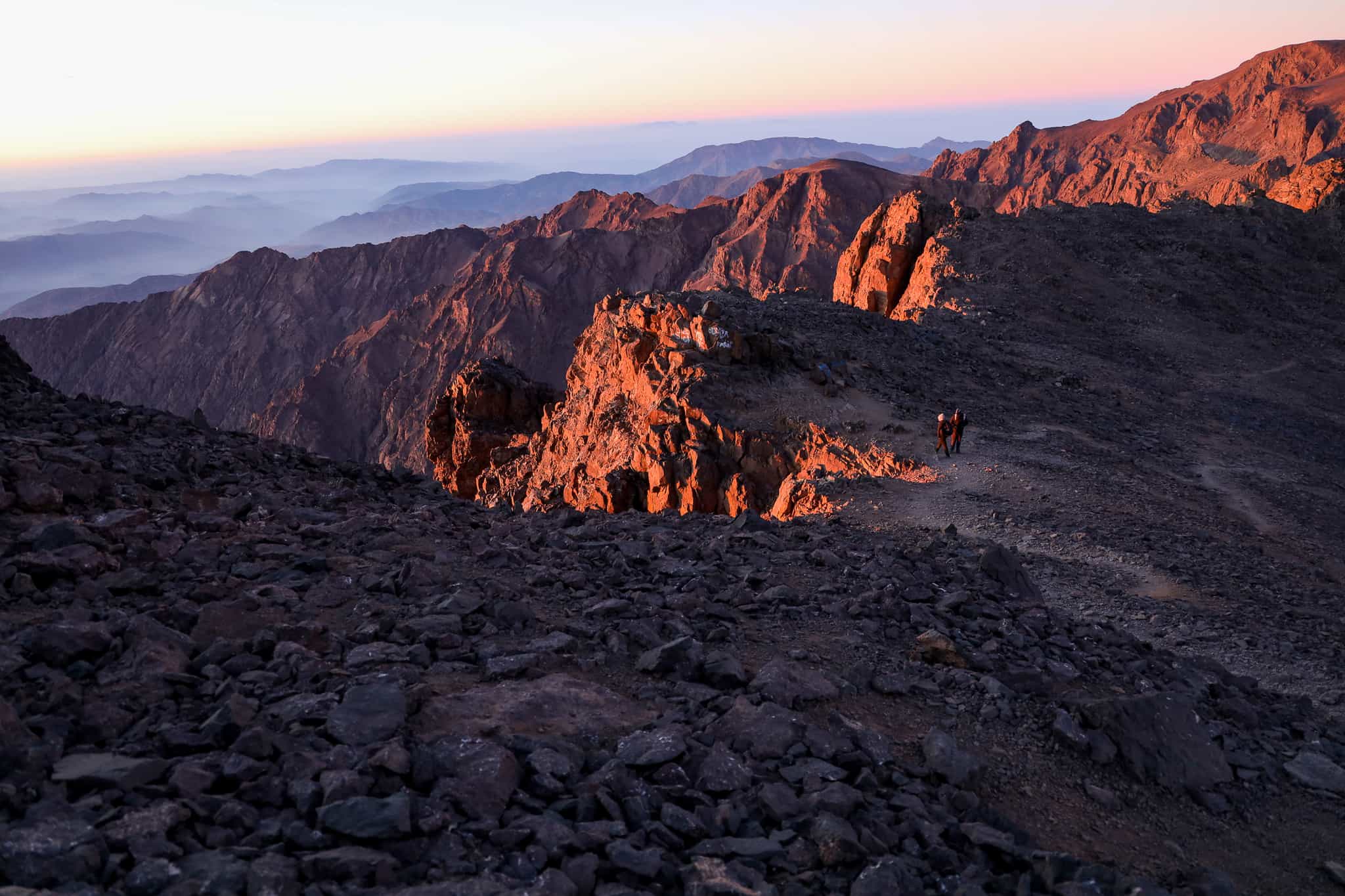
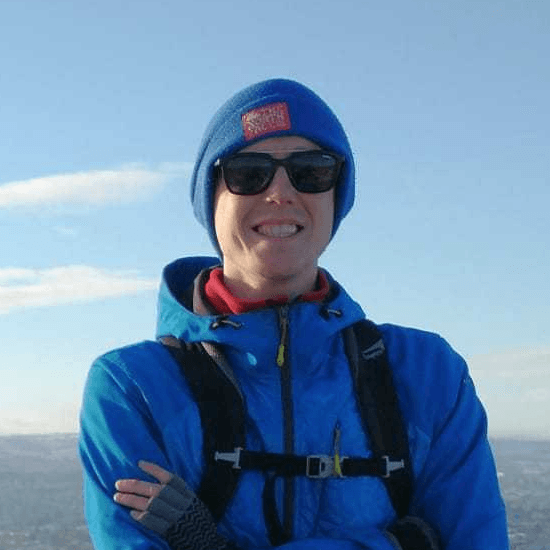
Need help finding flights?
From logistics and how to get there, to fitness, group dynamic and trip difficulty, Rory and his team of friendly experts are on hand to help.
We've got your back
Guaranteed to run
All Much Better Adventures trips are now guaranteed to run. Once you’ve booked your spot you can immediately make your travel arrangements, no uncertainty, no hanging about (excludes 'request to book' departures). Full details
Flexible payments
Secure your spot with the minimum deposit and pay off the remaining balance in as many instalments as you like, with no interest or fees. Full details
Happiness Guarantee
We’re so confident you’ll have an amazing time we’ll put our money on it. Full details
Full financial protection
To give you complete peace of mind Much Better Adventures is backed by ABTOT, ABTA and ATOL memberships. Full details
Tried & Trusted
Much Better Adventures is consistently rated ‘Excellent’ on Trustpilot with over 1000 verified trip reviews.
Connect before you go
You'll be invited to join a WhatsApp group to get to know each other before your big adventure together. Full details
DEPARTURE DATES
Wednesday 18th March 2026
to Sunday 29th March 2026





